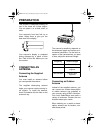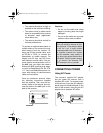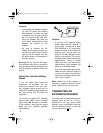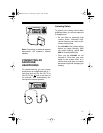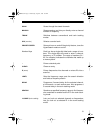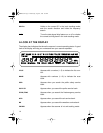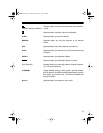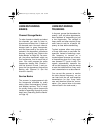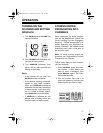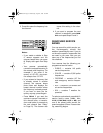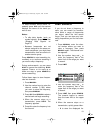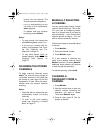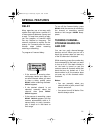
16
UNDERSTANDING
BANKS
Channel Storage Banks
To make it easier to identify and select
the channels you want to listen to,
channels are divided into 10 banks of
30 channels each. Use each channel-
storage bank to group frequencies,
such as those used by the police de-
partment, fire department, ambulance
services, or aircraft (see “Guide to the
Action Bands” on Page 39). For exam-
ple, the police department might use
four frequencies, one for each side of
town. You could program the police
frequencies starting with Channel 1
(the first channel in bank 1) and pro-
gram the fire department frequencies
starting with Channel 31 (the first
channel in bank 2).
Service Banks
The scanner is preprogrammed with
the frequencies allocated by public
safety, police, fire/emergency, aircraft,
and weather services. This is handy
for quickly finding active frequencies
instead of searching through an entire
band (see “Searching Service Banks”
on Page 18).
UNDERSTANDING
TRUNKING
In the past, groups that broadcast fre-
quently, such as police departments,
were restricted to transmitting on just
a few frequencies. This resulted in
heavy traffic and often required 2-way
radio users to wait for a specific fre-
quency to clear before transmitting.
Trunked systems allow more groups
of 2-way radio users to use fewer fre-
quencies. Instead of selecting a spe-
cific frequency to transmit on, a
trunked system chooses one of sever-
al frequencies when the 2-way radio
user presses PTT (push to talk). The
system automatically transmits the
call on that frequency, and also sends
a code that identifies that 2-way radio
user’s transmission on a data channel.
You can set this scanner to monitor
the data channel frequency, so you
can hear both the call and response
transmissions for that 2-way radio
user and therefore follow the conver-
sation. (You cannot listen to the data
channel itself in the trunk mode.)
20-430.fm Page 16 Wednesday, August 4, 1999 1:29 PM



